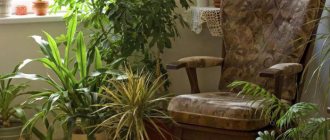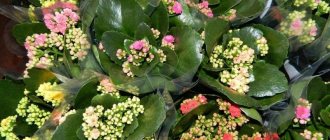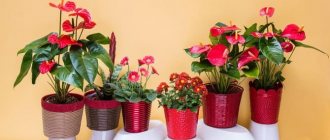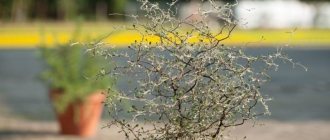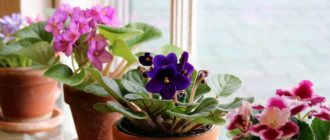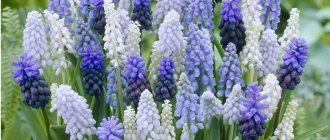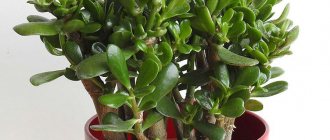The renovation is complete, but it seems like the interior is missing something? Try adding plants to your decor - they will add a touch of freshness and coziness, and the room will look “more alive” and cleaner. But it’s not enough to just put one flower. In order for the interior to sparkle with new colors, you need to familiarize yourself with the basics of phytodesign - it’s a whole science!
Ways to place plants in the interior
Many people are accustomed to the fact that if there are plants in a room, they must be on the windowsill or on the floor. But there are many more ways to effectively plant green spaces. In addition, in addition to their decorative function, flowers can also adjust the size of a room, hide flaws and emphasize its advantages. Most often, designers use the following interesting techniques:
- Vertical gardening. In this case, plants can either climb along the walls or hang from the ceiling. This technique helps to zone the space, dividing it into two parts. This is especially true for studio apartments or rooms where several people live.
- As a background. Plants can be not only an expressive highlight of the interior, but also a backdrop for creating a certain atmosphere. As a rule, this is used in eco-style - a green wall above a bed or sofa looks more appropriate here than ever.
- Visual increase in ceilings. Low ceilings put pressure psychologically, making the interior feel uncomfortable. There are many design ways to hide this flaw, one of which is the use of climbing plants. They seem to pull the walls up, giving volume and depth to the room.
When landscaping, it is important to consider the size of the room. The rule applies here for all types of decor: small objects for small rooms. Avoid large plants and opt for small hanging pots. To prevent them from looking lonely, place a small flower in an expressive vase on the table.
In rooms with wooden furniture, woody plants, such as palm trees, look very harmonious. But do not refuse them if the interior does not have wooden textures - plants are appropriate in almost any setting.
With the help of plants, you can create interesting compositions that highlight the features of the interior. For example, in a black and white room, create a green corner from several plants with different heights of stems and leaves - such differences will emphasize the contrasting color palette.
Popular options for indoor flowers
If quite recently violets occupied the dominant role in the rooms, now they have been replaced by other flowering plants, such as:
- Palm trees;
- Azaleas;
- Monsters;
- Ficus and orchids;
- Dracaenas and anthuriums.
The fashion for tropical species remains unchanged. Sufficient space allows you to have a decent decoration in the form of bocarnia. The trend now leaves the opportunity to admire real flowers in an open space, leaving their green counterparts the opportunity to live in the home.
For example, you can start growing Scandinavians or bonsai. Many adherents of green interiors dedicate an entire wall or a separate corner for this. Modern apartments have begun to be decorated with original dry plants, which are placed in an unusual vessel. This could be a small watering can or a clay vase in the shape of a jug.
Any experimental progress is welcome. The main thing is to use creativity in framing the room with flora. Classic vases were replaced by jars in a rare style, gravy boats and other capacitive vessels.
The location can be different - window sill, shelf, balcony. Large plants look great on the floor. Just don’t create oversaturation, otherwise the overall style won’t be noticeable.
How to properly use plants in the interior
Plants, as we have already noted, can play both the role of a background and be accents. In the first case, the furniture should be noticeable so that it does not get lost in the interior. But when you want to highlight plants, you need to choose a neutral background. Avoid brightly decorated walls, wallpaper with large patterns and large paintings. Also avoid furniture with expressive upholstery - it should not attract all the attention.
Plants with large leaves can be placed against wallpaper with a small, discreet pattern, such as polka dots or stripes. But for small-leaved ones it is worth choosing a plain background, otherwise the leaves will merge with it. This recommendation will help make the interior balanced and harmonious.
When adding green notes to the environment, you need to not overdo it. Plants are just “notes”; they are not the main subject in the interior, but only complement it, unless, of course, you plan to turn the room into a greenhouse. To keep the interior from looking like a jungle, use a moderate number of plants. You can even limit yourself to one expressive plant and complement it with thematic decor - pillows with plant images, curtains with a tropical pattern or wicker furniture.
To highlight simple plants, plant them in original colored vases. But for large and expressive flowers it is better to use simple pots, otherwise the plant will attract too much attention. Of course, you need to remember that plants are not simple decoration that you can set and forget about. Each crop requires special conditions, proper watering and care. When choosing greens, you should pay attention to this first, otherwise the plants will simply die.
Carefully read the rules for caring for the plants you like. Try to create the necessary conditions for them, and if that doesn’t work, look for other crops. Fortunately, there will be no problems with this now - there are many articles on the Internet about caring for plants.
Interior decoration. Adviсe
The perception of any flower depends on the size of the pot, its shade and shape. The right choice will help a special perception of its merits. You shouldn’t choose only those pots that look great on display.
It is best to base it on interior preferences. For example, you can completely replace an ordinary vessel with a small jar left over from tea. To do this, just paint the metal object in the color that is most suitable for the interior and the green plant.
Flowers do not need to be hidden behind a curtain, because they are the ones who decorate the room with their presence. The correct location will save the room from being overly busy. This way you can create an amazing corner where you can relax, just read your favorite book, take a break from everyday affairs and worries.
Stylish bamboo shoots will perfectly replace somewhat boring violets. The cactus that replaced the begonia will look original.
The interior will only benefit from this, acquiring new qualities:
- Pleasant environment;
- Unobtrusive saturation;
- Decent attractiveness.
Basics of phytodesign
The easiest way to green your interior is to seek help from an experienced designer. But this can be expensive, and furnishing your home yourself is much more pleasant. Although it will not meet all the rules of interior design, it will definitely acquire uniqueness and reflect the character of the owner. And to do this competently, you need to familiarize yourself with the basic nuances of phytodesign.
When choosing plants, you need to remember that they not only decorate the premises, but also require special conditions and proper care. But that’s not all: some crops can be harmful and even life-threatening for family members. For example, very often you can find Dieffenbachia in the interiors of residential buildings. But it is not recommended to install it if there are small children or animals in the family - the juice of the plant is quite poisonous.
Choose plants that have a positive effect on human well-being. Decorate your interior with these crops, and you will forever forget about stress and poor health:
- Lavender is a real antidepressant. It relieves headaches, helps you fall asleep faster and get rid of anxious thoughts. The pleasant smell of flowers reduces high heart rate and relaxes.
- Physalis is a very bright and beautiful plant with expressive fruits. But in addition to its attractive appearance, it is also very uplifting.
- Geranium has such a fragrant scent that it can significantly reduce anxiety levels.
- Peppermint is a plant used everywhere. You can even find mint chocolates on sale, let alone interior decor. It relieves fatigue and irritability, and in the course of research by psychologists it was even found that mint helps fight depression.
- Rose is a very beautiful plant that has become a symbol of love and attention. Bouquets of roses add romance and luxury to the interior, and give the owner a good mood.
- Aloe is another crop that can compete with mint in popularity and breadth of use. Aloe is used in medicine and cosmetology, and even helps with weight loss. The juice of this plant is indicated for chronic gastritis and loss of appetite. And in the interior it perfectly purifies the air, fills it with oxygen and helps you fall asleep. In ancient Egypt, it was believed that aloe could drive away evil spirits.
Another interesting feature of some crops is the ability to purify the air, removing dangerous fumes from it. If you have recently painted the walls, carried out renovations, or your room faces the roadway, filter plants will come in handy more than ever.
In 1989, NASA conducted a study that identified the best plants for cleaning rooms. Some of them can neutralize air pollution by more than 85%. The best purifying plants that look interesting and decorate the interior:
- Anthurium Andre humidifies the air, purifying it of harmful xylene and converting it into safe chemical compounds.
- Golden lotus is perfect for installation in the shade. It purifies the air from formaldehyde and benzene. However, it is worth remembering that this plant is very poisonous, so keep it away from children and animals.
- Chlorophytum. The plant received another name, “spider,” due to its long, spreading leaves. Eliminates benzene and formaldehyde, in addition, it is completely safe for children and animals.
- Climbing ivy. Another great choice for dimly lit rooms. The shade-loving plant actively fights against benzene, formaldehyde and carbon monoxide, and also eliminates mold.
I raised you - I will eat you: about beautiful and tasty phytodesign
It turns out that nothing human is alien to high fashion. She blessed - there is no other way to say it - the creation of garden greenhouses, the placement of edible indoor plants in the interior of a city house. Moreover, for many, this activity has become an incredibly contagious hobby, and amateur designers are in the process of searching for new “tricks.”
First of all, let's look at the kitchen and dining room. All kinds of bucket jars, as well as quite respectable flowerpots (depending on the style of the interior) are densely planted with parsley, watercress, arugula, mustard, basil and other spicy herbs. Nobody strives to bring it to a state of biological ripeness. When it grew, they cut it down and planted a new one.
Spicy herbs are appropriate in the kitchen interior
If opportunities allow, you can decorate a phytopan above the dining area.
Another option for selecting plants is “guests from the dacha.” At the end of the summer season, bushes of dwarf tomatoes and peppers move into the kitchen (chili looks especially nice). Of course, they can be grown directly in pots, bypassing the garden beds.
Resourceful housewives have found that stalks of lettuce and Chinese cabbage - leftover greens from the supermarket - take root very well in pots. Practical, tasty, beautiful! And what’s especially nice is that now it’s fashionable!
At the end of the summer season, move dwarf tomato bushes into the kitchen
Trees and bushes with delicious fruits can also be found in living rooms. Among the most popular are lemon, pomegranate, fig, dwarf tangerine, and avocado. Actually, experiments with planting exotic plants from seeds continue and soon they can be called indoors.
Lemon trees can increasingly be found in living rooms
Indoor plants in the kitchen interior
A favorable location for most plants. All conditions for their comfortable growth are provided here: moderate humidity, frequent ventilation and plenty of sunlight. But there are some peculiarities here too.
Plants that love the warmth of the sun should be placed on the windowsill: dracaena, monstera, agave, orchid and, of course, cactus. Shade-loving crops should be grown in the darkest corners of the kitchen - on small tables away from the window or on special shelves. Do not place plants near the refrigerator and stove - the air in these places is either too cold or too hot - this is destructive for many crops. The same recommendation applies to the sink - splashes of detergent and grease will splash on plants standing next to it.
Terrarium with succulents
Photo from dyrogue.com
A terrarium is a container where special conditions have been created for keeping certain animals, such as reptiles or amphibians. However, not everyone knows that not only animals, but also plants are kept in a terrarium. Most often, it is “inhabited” by cacti and succulents - the simplest and most unpretentious plants to care for, with low growth rates and small size.
Even an inexperienced gardener can make a terrarium. To create it you will need:
- any container (you can use ceramic, glass, and plastic);
- plants;
- drainage (stones, expanded clay or pebbles);
- the soil;
- charcoal;
- decorative jewelry: figurines, stones, accessories.
The terrarium (see photo) includes the following flowers:
- aloe vera,
- succulents,
- fittonia,
- Crassula (money tree),
- agave,
- cacti.
Step-by-step instructions for making a terrarium:
- Place a drainage layer 3-5 cm thick on the bottom of the container (the higher the container, the greater the thickness should be). To prevent soil and drainage from mixing, place a layer of sphagnum moss or burlap on the stones.
- Pour 1-1.5 cm of charcoal, which will act as a disinfectant and odor absorber.
- The next layer is soil. The best option for a terrarium is to buy ready-made soil for succulents, with the “correct” structure and a set of useful substances necessary for plants of this type. To make the terrarium more natural, do not lay the soil in an even layer - create a slight slope.
- Plant the largest plant first. Then, arranging it to your liking, arrange smaller ones around it.
- At the end of the work, cover the soil surface with any mulching material (shells, pebbles, marble chips, etc.) and place decorative elements.
One of the varieties of terrarium is a florarium - a special container (usually closed) made of glass or transparent plastic. For the plants located in it, optimal humidity and temperature are created that they need for normal development. We talked in detail about the creation of a florarium earlier.
- How to make a florarium with your own hands and care for it
Do you dream of your own garden, but you don’t have a dacha, or even a balcony? Let's try to make a florarium - a mini-greenhouse behind glass.
Plants in the living room interior
This is the heart of all housing, and special attention is paid to its interior. In most cases, this is a spacious room, so tall and large plants in large vases look appropriate here. Show originality and abandon classic pots in favor of floor racks and whatnots - they will turn plants into the highlight of the interior.
Vertical pot group
If space in the apartment is limited, but the gardener’s desire to have a beautiful garden at home is enormous, then vertical pot groups help with this.
Vertical compositions are placed on different surfaces:
- wooden or metal stands;
- metal picket fence on the wall;
- hanging flowerpots or baskets;
- shelving (for example, corner);
- walls with a special recess for pots.
For vertical compositions, various indoor plants are used, but most often ampelous ones. The name "ampel" plants (from the German Ampel) was given for their hanging and creeping shape. Bellflower, nidularium, ivy, ficus creeping, fittonia, hoya and other ampelous flowers can be seen in potted groups.
The vertical arrangement not only visually increases the volume of the room, but also improves the microclimate in the house, which is why these compositions are used in large houses by designers.
The most important thing for both flower growers and professional craftsmen is to follow certain rules for creating compositions.
Bedroom with indoor plants
The atmosphere here should be calm and peaceful. The decor, including plants, is selected precisely according to this principle. Do not use flowers with strong aromas - they will interfere with sleep, and in the morning you risk waking up with a headache, because you have been breathing these smells all night.
Just a couple of non-flowering and slow-growing crops will be enough, which will look especially beautiful in a pot over the bed. Avoid an abundance of lilies and orchids - they absorb a lot of oxygen, which will cause dizziness and poor health of the owner.
Composition of decorative foliage plants and Kalanchoe
Photo from joyusgarden.com
This composition includes:
- scindapsus (epipremnum),
- peperomia Amigo Marcello (Amigo Marcello),
- peperomia Rosso (Rosso),
- Kalanchoe,
- rubber-bearing variegated ficus.
Step-by-step instructions for creating a composition from indoor plants:
- Place a layer of drainage at least 3-5 cm thick at the bottom of the container. This is especially necessary if the container does not have a drainage hole.
- Place approximately 1 cm of charcoal or activated carbon on the drainage. Charcoal improves drainage, kills bacteria in the soil and absorbs odors.
- Fill the container with soil made up of equal parts soil for indoor flowers and soil for cacti and succulents.
- You can add a few handfuls of ready-made compost to the soil.
- Remove the largest plant from the small pot and plant it in the container. Then plant smaller plants one at a time, moving towards the edge of the container.
- If the soil was wet, it is not advisable to water the plants immediately after planting. Carry out the first watering after the soil begins to dry out.
- Place a layer of mulch on the surface of the soil. It can have both a useful function (retain moisture in the soil) and a purely decorative one. As mulching material, you can use pebbles, glass crystals from craft stores, shells, moss, small beautiful stones that can be found in every garden, driftwood, bark and any other material. The composition will also be enlivened by miniature accessories that will help turn the flower arrangement into a fairy garden or country estate.
Plants in the hallway
A person is greeted by his clothes, and an apartment by his hallway. It is she who makes the first impression on guests, so you need to try to make it cozy and stylish.
As a rule, the hallway is quite cramped and lacks light. For this reason, it is worth choosing plants that tolerate darkness well: begonias, violets, clivias, fuchsias, chlorophytum, aspidistras. Plants framing mirrors, paintings and shelves look interesting. If there is a niche in the hallway, it will be an excellent place for a large outdoor plant in a vase.
Method of dividing space
Zoning can be done using a hedge of vines, the shoots of which are fixed on special lattice screens or supports. Large single plants in floor pots placed in a row will also do the trick.
Maintaining a favorable microclimate, purifying the air. The leaves of indoor plants (sansevieria, aloe, dracaena, philodendron) serve as a “factory” for the production of oxygen and maintain the necessary humidity in the room.
Spathiphyllum, chamedorea and ficus will clean the air of toxins, benzene vapors and other volatile fractions that enter the house from the street through an open window. Geranium will help destroy bacteria and viruses, enriching the air with phytoncides.
All plants act as natural antidepressants that help cope with nervous disorders and improve sleep quality.
Live indoor plants in the bathroom
Plants in the bathroom are quite rare, and the reason for this is poor lighting, high humidity and lack of space. However, owners of private houses are lucky, because the bathroom can be equipped with windows. Then it can be decorated with moisture-loving plants. Monstera, violet, and Japanese fatsia are perfect.
If there are no windows, but you still want to add green notes to the bathroom, use artificial plants. Some people think that such decor makes the interior lifeless, but you just have to look hard and you can easily find imitations of plants that cannot be distinguished from the real ones.
Indoor plants add coziness to any interior and create a homely atmosphere. The main thing is to choose them correctly, taking into account the characteristics of each culture. Don’t forget to water your flowers on time, and they will delight you with their beauty for many years!
Application options in interior design
The comfort of living in a house or apartment largely depends on how well the plants are selected. This concerns not only and not so much the design as the functional purpose of the room. Thoughtlessly filling rooms with exotic flora will not bring anything good either to the apartment owners or to the plants themselves. When purchasing flowers, you need to realistically assess your capabilities and be strictly aware that you will be able to care for them.
Living room
The living room is the largest, most elegant room for receiving guests. Large and broad-leaved outdoor plants are appropriate here. In a small room there is room for climbing plants and compact specimens in hanging flowerpots and baskets. Next to traditional indoor crops, freshly cut flowers in vases look beautiful and unusual. To maintain the lightness and elegance of the interior, designers recommend using transparent glass flasks or aquariums.
Kitchen
The kitchen is one of the most favorable places for a home botanical garden. This room is well lit and has a higher humidity level than other rooms. Considering that food is prepared here, the air temperature in the kitchen is higher than in the living rooms. Therefore, this is the place for light- and heat-loving crops. However, green pets should not be placed near the stove, as they can get sick or die from excessive heat. The area near the sink is also not the best place, as soap splashes and drops of grease can damage the flowers. It is necessary to correlate the size of the plants and the kitchen space. The kitchen microclimate is best tolerated by ivy, chlorophytum, tradescantia, asparagus and aloe. In addition, chlorophytum purifies kitchen air from harmful fumes.
A great idea for the kitchen is a miniature “vegetable garden” with green onions, parsley, basil, mint and decorative peppers. An interesting design solution is the use of kitchen utensils instead of the usual flowerpots.
Bedroom
The task of flowers in the bedroom interior is to fill it with tenderness, peace and comfort. Another important rule: there should not be many plants in the bedroom. This is especially true for strong-smelling flowers. A pungent or suffocating aroma can cause sleep disturbances and headaches. There is no place for ferns and lilies in the bedroom, as they absorb oxygen and release carbon dioxide in return. Plants can be placed on the floor (if space allows), on tables, bedside tables or window sills. It all depends on how light-loving they are. Aloe and Kalanchoe are great for the bedroom, as they release oxygen at night and create a favorable microclimate. An interesting idea is a combination of living plants and photo wallpaper with a “plant” picture on an accent wall.
Children's
The principles for choosing colors for a nursery are simple: they should be pleasing to the eye, be safe and have a beneficial psycho-emotional effect on the child. The best plants for a nursery are:
- Crassula "money tree". This plant programs for positivity.
- Cyclamen. It has been found to promote creativity.
- Usambara violet, soleirolia. These decorative flowers have the unique ability to improve your mood. Girls especially like violets.
Just like in the bedroom, you don’t need a lot of flowerpots in the nursery. A couple of small pots will be enough.
Hallway
The hallway is the first room where visitors enter when entering a house or apartment. Is there room for plants in the hallway? Of course there is. If there is a window, this is, of course, good luck, but if there is not enough light, you can think about purchasing shade-loving plants. These are marranta, sanseviera, dracaena or fatsia. They are unpretentious, tolerate lack of lighting and temperature changes inherent in the hallway.
When choosing plants for the hallway, you need to pay attention to the square footage of the room. If it is spacious enough, large, lush views will look good. For example, a fern would be appropriate both in a group with other crops and as a stand-alone accent. For a small area, small flowers placed on special shelves and stands are desirable. An example is Heder's ivy. This small but very beautiful plant will transform the hallway and create an atmosphere of indescribable comfort and coziness.
Bathroom
The bathroom is a closed space, so the correct selection of plants is very important. The benefits of homemade flowers in the bathroom are as follows:
- Plants release oxygen, have a disinfecting effect, and create a favorable and comfortable microclimate.
- Destroy unpleasant odors.
- They improve your mood with a beautiful view.
The bathroom is a hot and humid place, so it makes sense that tropical species would do best here. These are yucca palms, dracaenas, orchids, bamboo, spathiphyllum, croton, and various types of ferns. It is especially easy to choose a flower if the bathroom has a window. However, in any case, plants placed in the bathroom require special care:
- The room needs to be ventilated regularly.
- Watering flowers is moderate, as the soil dries out. Stagnant water will harm even the most moisture-loving plants.
- In winter, there is no need to feed flowers.
- If there is no window in the bathroom, it is necessary to install fluorescent lamps. Special phytolamps designed for greenhouses are also perfect. They are not cheap, but they are completely worth it.
- Periodic movements from the bathroom to the balcony or kitchen will also benefit the plants.
Depending on the size of the room, plants can be placed on the floor, walls, special stands or window sills. Putting flowers on a washing machine or placing them near heating appliances is prohibited.
